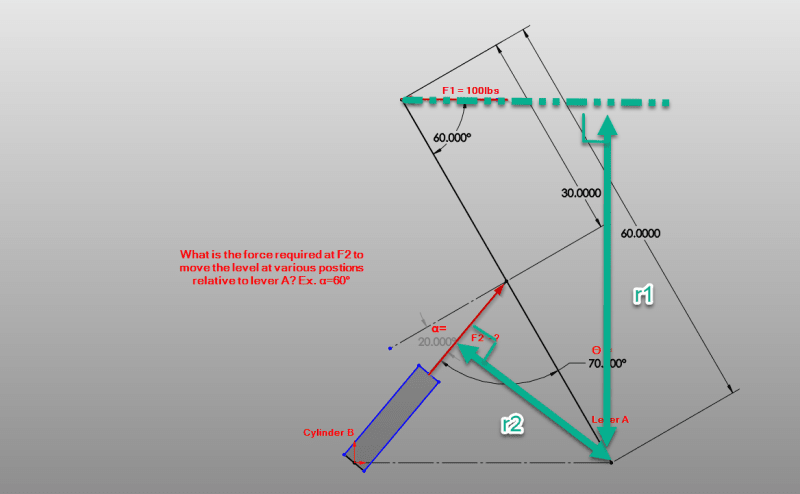AGENGR1
Agricultural
- Oct 12, 2022
- 4
Hi,
Looking to calculate the force required to move a lever arm with a force acting at an angle on the end of it. See diagram below.
Essentially the position of this arm is variable from Θ70° to 20°.
Thanks in advance for any help!
Looking to calculate the force required to move a lever arm with a force acting at an angle on the end of it. See diagram below.
Essentially the position of this arm is variable from Θ70° to 20°.
Thanks in advance for any help!

